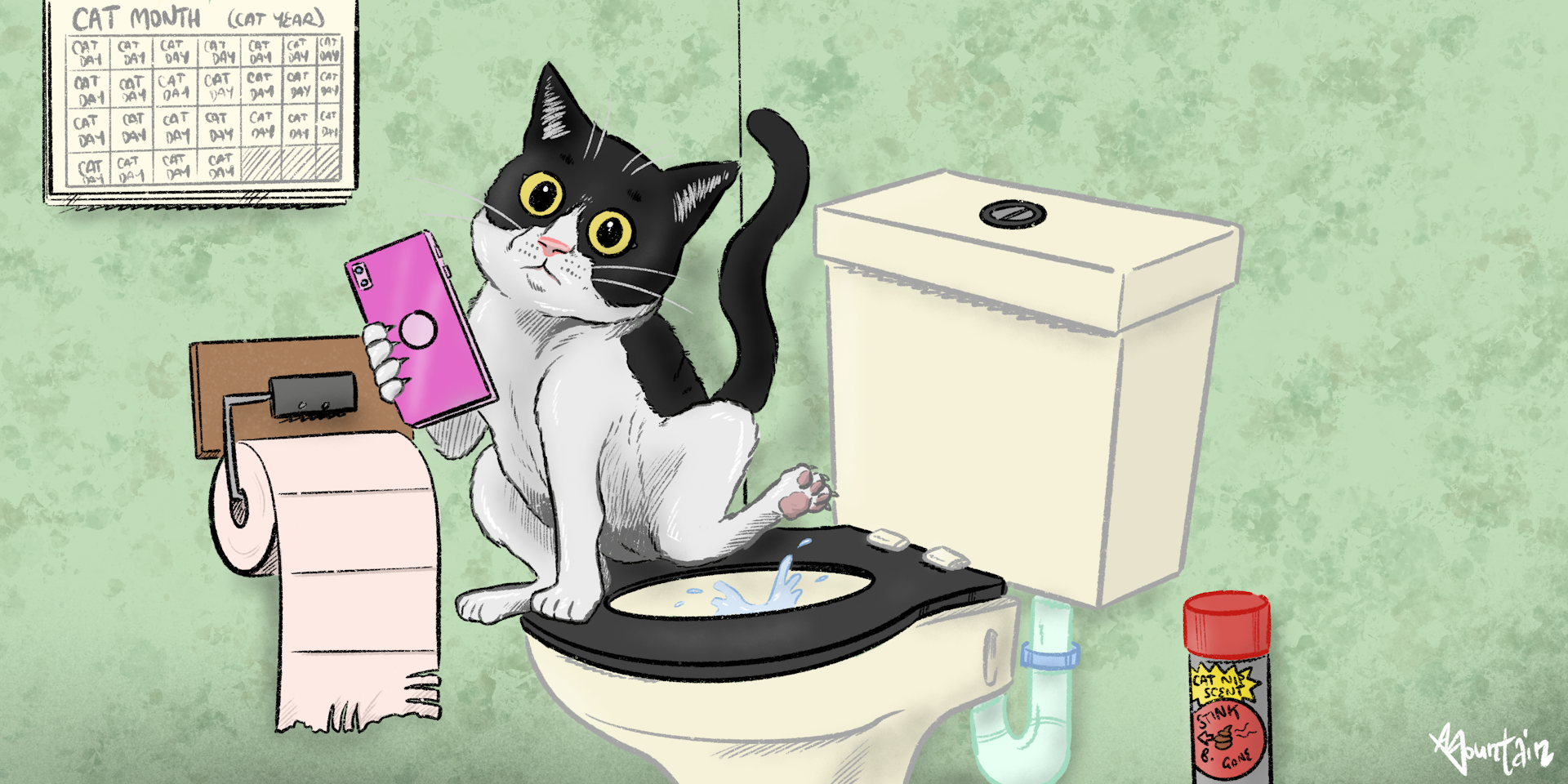Why You Should Avoid Flush Cat Poop Down Your Toilet - Crucial Information
Why You Should Avoid Flush Cat Poop Down Your Toilet - Crucial Information
Blog Article
They are making several good points regarding How to Dispose of Cat Poop and Litter Without Plastic Bags as a whole in this content on the next paragraphs.

Introduction
As cat proprietors, it's essential to be mindful of exactly how we dispose of our feline pals' waste. While it may appear hassle-free to purge feline poop down the bathroom, this technique can have detrimental repercussions for both the setting and human health.
Alternatives to Flushing
Fortunately, there are more secure and more accountable means to deal with pet cat poop. Take into consideration the complying with alternatives:
1. Scoop and Dispose in Trash
The most typical technique of getting rid of feline poop is to scoop it into a naturally degradable bag and throw it in the garbage. Make sure to make use of a committed clutter scoop and take care of the waste promptly.
2. Use Biodegradable Litter
Opt for biodegradable pet cat litter made from products such as corn or wheat. These clutters are environmentally friendly and can be safely dealt with in the trash.
3. Hide in the Yard
If you have a backyard, take into consideration hiding pet cat waste in a designated location away from veggie yards and water sources. Be sure to dig deep adequate to stop contamination of groundwater.
4. Install a Pet Waste Disposal System
Buy a family pet garbage disposal system specifically created for pet cat waste. These systems use enzymes to break down the waste, reducing smell and ecological effect.
Health and wellness Risks
In addition to environmental worries, purging feline waste can also posture wellness dangers to humans. Pet cat feces might have Toxoplasma gondii, a bloodsucker that can create toxoplasmosis-- a possibly serious disease, particularly for expecting women and people with weakened body immune systems.
Ecological Impact
Flushing pet cat poop presents dangerous microorganisms and parasites right into the water system, posing a substantial risk to marine ecological communities. These pollutants can adversely influence aquatic life and compromise water top quality.
Conclusion
Liable pet possession extends beyond offering food and shelter-- it likewise entails appropriate waste management. By avoiding purging pet cat poop down the toilet and going with alternate disposal approaches, we can reduce our environmental impact and safeguard human health and wellness.
CAN I FLUSH MY CAT'S POOP DOWN THE TOILET?
Always avoid flushing cat poop down the drain because not only could it potentially contain harmful parasites called toxoplasmosis, the litter could sit in your line and lead to a clog.
Plenty of waste gets flushed down your toilet every day, so what harm could a little cat poop and cat litter do? The answer is a lot, which is why you never want to send it down your drains.
Can I Flush My Cat's Poop Down The Toilet?One of the biggest problems with flushing your cat’s presents is the harmful parasites in your feline’s stool called toxoplasmosis. Extremely dangerous for humans, especially pregnant women and people who are immunocompromised, these parasites can cause a multitude of problems for unborn babies and even cause death or miscarriage if the infection happens early. That’s why you should always avoid touching cat poop. Also, water systems are not equipped to handle toxoplasmosis and are unable to destroy the parasite before it’s sent back into the environment, potentially jeopardizing the health of local area wildlife, specifically marine life.
Flushing cat poop could also lead to a future drain clog. Try as you may to eliminate any litter from it, there will always still be some stuck on there – and even if it says flushable on the label, it’s not! Cat litter is made up of bentonite clay, which has the tendency to harden when wet, creating a thick, almost cement-like quality. Cat litter that ends up down the drain can expand from the moisture in the pipes and then harden, blocking any wastewater. If you have a septic tank or a cesspool, it cannot handle cat litter either, no matter what kind. If it solidifies in the tank, in any of the system’s major parts like the inlet baffle, it’ll create some expensive problems.
The best way to dispose of cat poop safely is to scoop it into a bag and throw it into the trash – and ways of dealing with the smell include adding baking soda and replacing the box more.
Now that we’ve explained the potential harm that flushing cat poop can cause to you and your drains, you might be wondering the best way of dealing with it. Unfortunately, it’s the old-fashioned way of scooping it into a bag and then placing it into a trash can. They also make pet-proof trash cans that lock in the smell, so that you don’t have to always immediately take it out. If you’re tired of smelling the litter box after even just one use from your feline, there’s things you can do to help combat that smell. Adding baking soda to the litter will reduce smells, but just don’t add too much or your cat will no longer want to use the box. You could also replace the box more frequently, at least once a year, as those smells can just seep inside the scratch marks. Lastly, try changing to a new litter formula – some are better with smells than others.

I found that blog posting on Don’t flush cat feces down the toilet when surfing the search engines. Sharing is nice. Helping people is fun. We truly appreciate reading our article about Don’t flush cat feces down the toilet.
View More Report this page